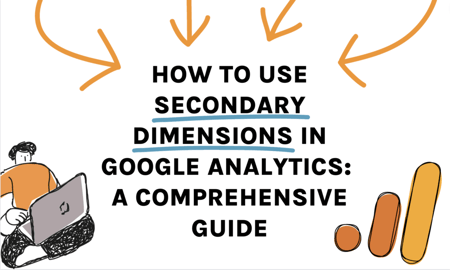Optimize Your Coverage Precision With Secondary Measurements
In the world of information evaluation, the quest for precision and depth is a perpetual quest. Second measurements provide a portal to enhancing reporting precision by offering a multifaceted lens through which to check out data. Visualize the power of unraveling complex layers of info that lie beyond the surface area metrics, supplying a richer tapestry of understandings waiting to be explored. As we start this trip of leveraging second dimensions, the landscape of reporting precision beckons with guarantees of enhanced quality and critical decision-making.
Value of Additional Dimensions
Using second dimensions is essential for improving the depth and granularity of reporting insights in data analysis. By including additional dimensions into data analysis processes, services can gain a much more comprehensive understanding of their performance metrics. These additional measurements offer an even more in-depth view of the primary information, enabling an extra nuanced analysis of patterns and trends. Secondary measurements enable experts to sector and filter data based on specific requirements, supplying a much more personalized and targeted evaluation.
Moreover, second measurements help in identifying correlations and relationships that might not be right away obvious when analyzing information with only primary measurements. This much deeper degree of understanding can lead to even more educated decision-making and tactical planning within a company. By leveraging additional measurements successfully, services can discover covert chances, pinpoint areas for renovation, and maximize their general performance.
Executing Second Measurements
To incorporate secondary measurements effectively right into data analysis procedures, organizations need to embrace an organized technique that aligns with their reporting purposes and analytical objectives. Applying additional dimensions includes picking the ideal dimensions that provide much deeper insights right into key data metrics.
Furthermore, businesses need to ensure that the picked second measurements relate to the key information and offer meaningful context without creating information overload. Applying secondary measurements additionally calls for defining clear logical inquiries that the extra dimensions will certainly aid address. By structuring the execution procedure around these factors to consider, companies can make best use of the value originated from secondary dimensions and boost the accuracy and depth of their coverage.
Analyzing Data With Second Measurements

One trick facet of evaluating information with secondary dimensions is to make sure that the picked measurements straighten with your certain logical goals. Choosing the right additional measurements can give context and nuance to your main information metrics, enabling you to attract more precise final thoughts and make informed choices based upon the insights got.
Additionally, see this page leveraging second measurements successfully can aid in recognizing outliers, understanding the impact of various variables on your crucial performance signs, and gaining a detailed view of your information landscape. By delving right into data with secondary measurements, you can improve the depth and high quality of your analysis, bring about more robust reporting and actionable results.

Enhancing Insights Via Additional Measurements
Checking out information through additional dimensions not just deepens evaluation but additionally amplifies the capacity for discovering beneficial insights that can considerably improve reporting accuracy. By adding additional dimensions to your records, you can get an extra extensive understanding of the relationships between various information factors. This boosted perspective allows you to identify patterns, trends, and relationships that may have been neglected when analyzing information with main measurements alone.

Essentially, leveraging additional dimensions encourages you to extract richer insights from your data, allowing you to make even more enlightened choices and enhance your coverage accuracy.
Best Practices for Secondary Dimensions
Making use of additional measurements properly requires careful consideration of key approaches to enhance data analysis and reporting precision. When executing second measurements, it is crucial to align them with your main metrics to obtain significant understandings.
One more essential practice is to explore different mixes of main and second dimensions to uncover distinct relationships and patterns within your data. This repetitive strategy can expose useful insights that might have been neglected otherwise. Additionally, it is essential to on a regular basis assess and fine-tune your secondary measurement options to ensure they stay relevant and aligned with your advancing reporting demands.
Furthermore, documenting the rationale behind your option of secondary measurements can provide context for future analysis and help with partnership within your group. By following these ideal methods, you can maximize the efficiency of secondary measurements in enhancing your reporting precision and driving notified decision-making.
Final Thought
Integrating secondary dimensions in data analysis is critical for taking full advantage of reporting accuracy and getting much deeper insights into efficiency fads. Executing finest techniques for additional dimensions boosts the depth of analysis and improves the significance of reporting results.
In addition, second measurements help in recognizing connections and relationships that you can try these out may not be right away evident when evaluating data with only key measurements. Implementing additional measurements includes selecting the best dimensions that supply deeper insights right into primary data metrics. Executing second measurements also requires defining clear analytical inquiries that the additional measurements will aid respond to.When analyzing data with additional measurements, it is critical to focus on extracting important understandings that match main information metrics. By integrating secondary dimensions right into your evaluation, you can uncover patterns, patterns, and partnerships that may not be noticeable when looking at the data from a primary dimension alone.